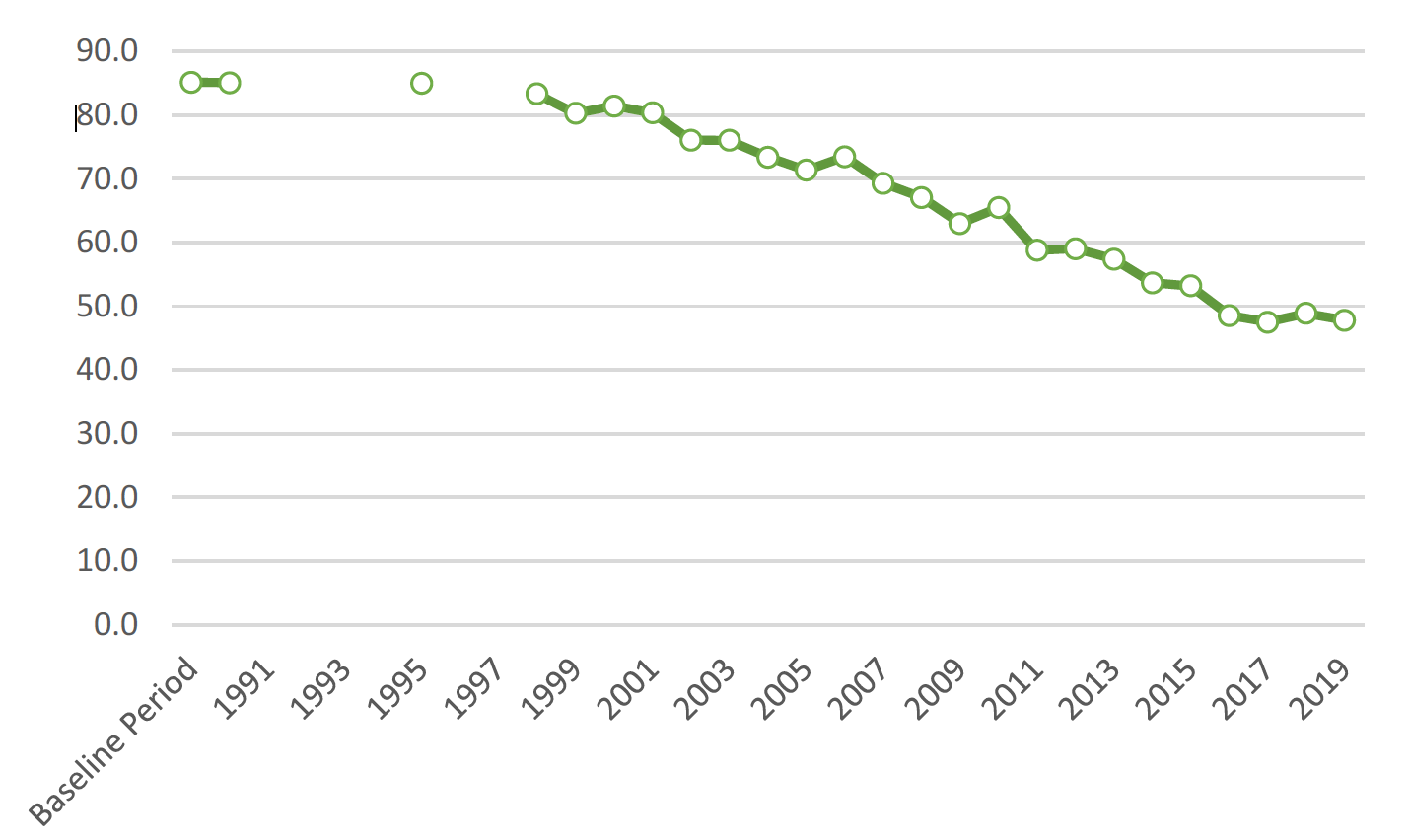Scottish Greenhouse Gas statistics: 1990-2019
The Scottish Greenhouse Gas Inventory is the key tool for understanding the origins and magnitudes of greenhouse gas emissions in Scotland. The inventory is compiled in line with international guidance from the Intergovernmental Panel on Climate Change.
Scottish Greenhouse Gas Emissions 2019
There are two measures of greenhouse gases presented in this release:
Source Emissions
47.8 MtCO2e in 2019
↓ Down 43.8% from 1990
↓Down 2.3% from 2018
Emissions For Reporting Against Targets
The Committee for Climate Change (CCC) recommended a new method of reporting emissions for the purposes of reporting against targets from the June 2020, and future, publications. This is known as the GHG Account and the calculation is detailed in section C.
↓ 51.5% from Baseline Period
On this adjusted basis, the GHG account reduced by 51.5 per cent between the baseline period and 2019.
The Climate Change (Emissions Reduction Targets) (Scotland) Act 2019 specifies a 55.0 per cent reduction over the same period.
Therefore the target for 2019 has not been met.
Laid before the Scottish Parliament by the Scottish Ministers under section 33 of the Climate Change (Scotland) Act 2009 Jun 2021 [SG/2021/136]
Figures have been revised since last year’s release to incorporate methodological improvements and new data
MtCO2e refers to million tonnes of carbon dioxide equivalent. This is a consistent measure of assessing the contribution of greenhouse gases to global warming.
The Baseline Period uses 1990 for carbon dioxide, methane and nitrous oxide and 1995 for hydrofluorocarbons, perfluorocarbons, sulphur hexafluoride and nitrogen trifluoride.
Key Trend – Source Emissions

In 2019, Scottish source emissions of the basket of seven greenhouse gases were estimated to be 47.8 million tonnes carbon dioxide equivalent (MtCO2e). This is 2.3 per cent lower than the 2018 figure of 48.9 MtCO2e; a 1.1 MtCO2e decrease.
The main contributors to this decrease between 2018 and 2019 were reductions in emissions in the business (-0.6 MtCO2e), Energy Supply (-0.4 MtCO2e), and Domestic Transport (-0.3 Mt CO2e) sectors. All other sectors demonstrated modest reductions over this period, with the exception of Land Use, Land Use Change and Forestry (LULUCF) which increased by 0.4 MtCO2e. The Agriculture and International Aviation and Shipping sectors showed essentially no change in emissions in the latest year.
Between 1990 and 2019, there was a 43.8 per cent reduction in estimated emissions, a 37.3 MtCO2e decrease. The most significant contributors to this overall reduction were:
- Fall in Energy Supply emissions (such as power stations) (-16.3 MtCO2e; 71.8 per cent reduction)
- 'Land Use, Land Use Change And Forestry' (LULUCF) reducing its net emissions over the long run, reducing by 6.4 MtCO2e since 1990.
- Fall in Waste Management emissions (such as Landfill) (-4.3 MtCO2e; a 73.5 per cent reduction)
- Fall in Business emissions (-4.6 MtCO2e; a 36.7 per cent reduction)
All other sectors have demonstrated a reduction in emissions since 1990 with the exception of International Aviation and Shipping which has increased over the period by 0.6 MtCO2e (+46.0 per cent).
More details can be found in Section B.
Revisions To Greenhouse Gas Emissions Statistics
Note that as part of this release all of the figures have been revised since the previous publication, to incorporate methodological improvements and new data. Comparing these 2019 figures with the 2018 figures published a year ago will therefore give a different year-on-year percentage change; one which is incorrect and should not be used. The correct percentage changes are given in this publication and associated tables. Details of these revisions can be found later in this statistical release in Section D.
Contact
Email: CCStatsModelling@gov.scot
There is a problem
Thanks for your feedback